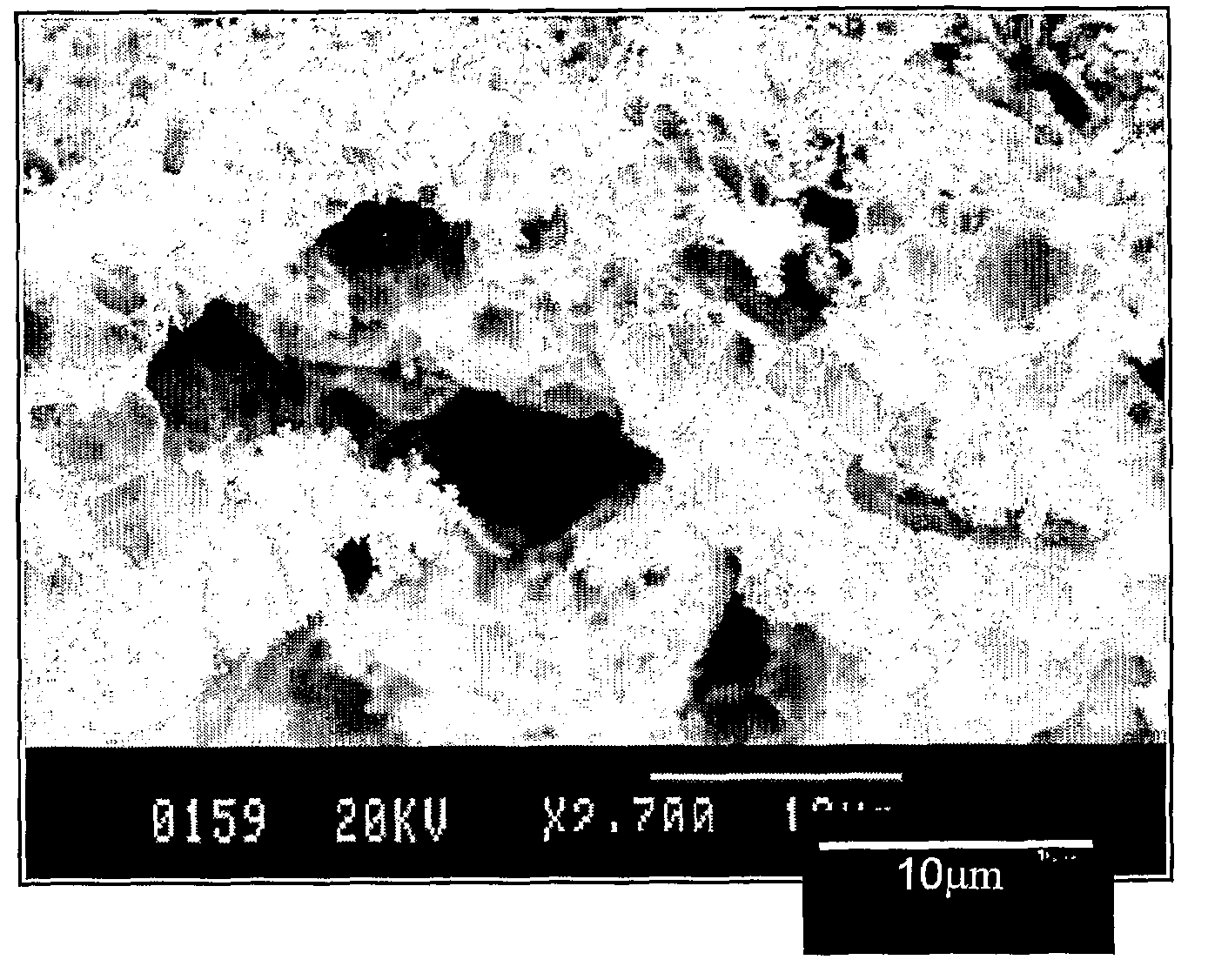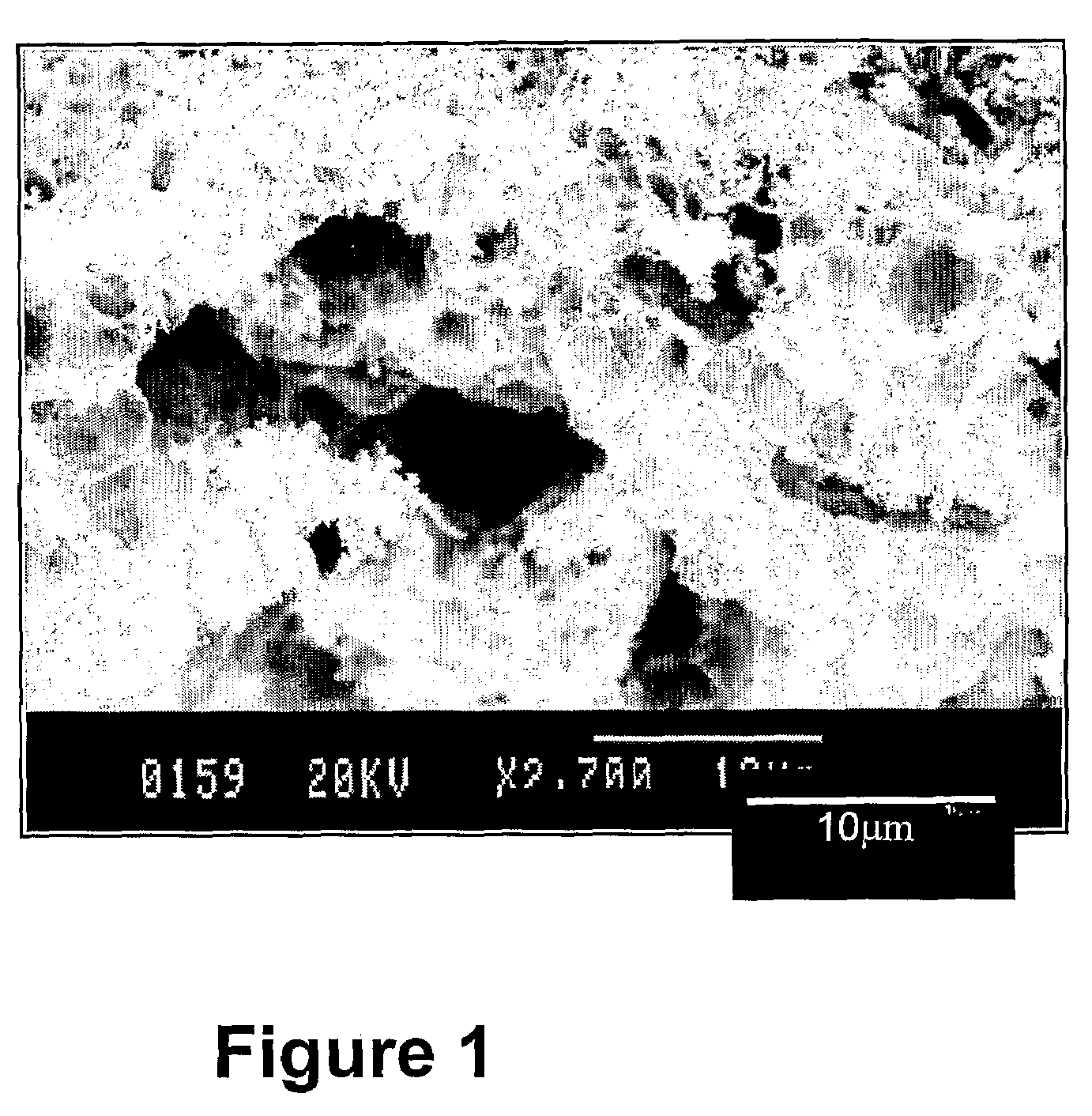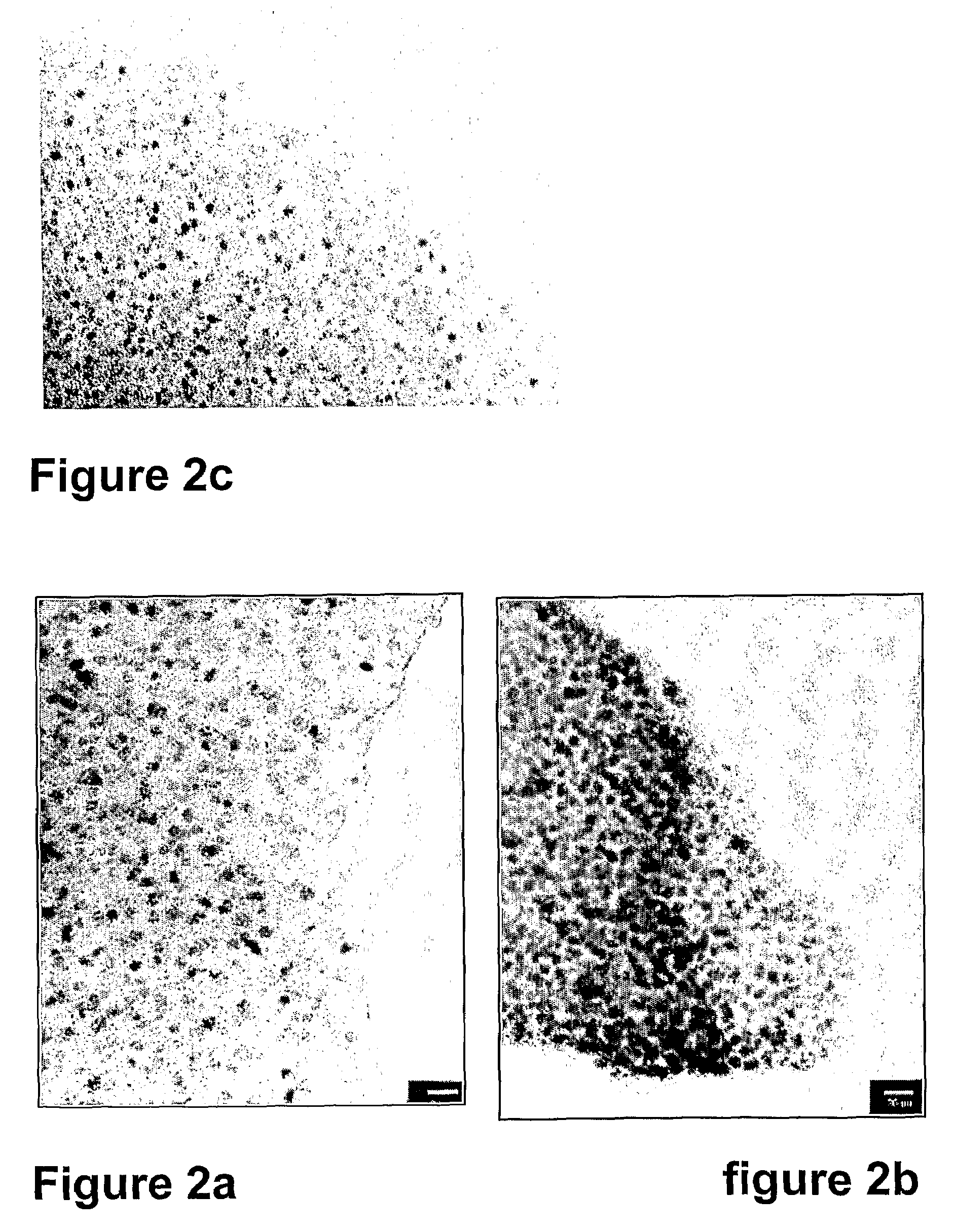Composite materials and method of its manufacture
a technology of composite materials and materials, applied in the direction of solar heat collector details, nickel oxide/hydroxide, silver compounds, etc., can solve the problems of ineffective approach, deactivation of catalysts, and limited knowledge concerning how to successfully tailor the size, contents and shapes of metal particles and the morphology of matrixes, and achieves superior properties, particularly in terms of metal loading, and is suitable for up-scaling to industrial scale
- Summary
- Abstract
- Description
- Claims
- Application Information
AI Technical Summary
Benefits of technology
Problems solved by technology
Method used
Image
Examples
example 1
[0071]Thus, two solutions were prepared separately, one containing Al-ions and one containing Ni-ions. Before synthesis, the glass equipment was carefully washed and dried at 150° C. for at least 1 hour, and cooled to room temperature under N2 atmosphere, while preventing any ingress of moisture.
[0072]The Al-solution was typically prepared by dissolving 10 g of Al(OiPr)3 in 500 ml of 1:3 HOAc:MeOH under N2. To avoid formation of Al(OMe)3 precipitate the HOAc was added before the methanol. After about 10 minutes the stirring was turned off and the solution was left for ca 12 hours to allow any undissolved material to settle. Instead of a solution containing only Al(OiPr)3 it is also possible to use a mixture of Al(OiPr)3 and Al(NO3)3.9H2O.
[0073]The clear and colourless Al(OAc)3 solution (made from Al(OiPr)3 but probably, without wishing to be bound by any theory, reacted with HOAc to form HOiPr+Al(OAc)3 or a similar acetate), was separated from the precipitate and its concentration w...
example 2
[0077]To make composite powders the solvents were evaporated at room temperature under constant stirring (in order to avoid preciptiation), until a dry greenish-white powder (low Ni-concentrations) or a green highly viscous liquid / sticky solid (high Ni-concentrations) had formed. These precursor powders / concentrates were then heated under inert atmosphere (N2 or Ar) with a heating-rate of (1-100° C. min−1) typically 10-50° C. min−1, and the final temperature was usually 600° C. (500-600° C.).
[0078]The heating-rate, final temperature and annealing time can be used to modify the metal particle size in the product. With the heating rate 30° C. min−1 to 600° C., particles having a size in the range of 5-8 nm (average 6.55 nm) for a Ni loading of 10%, and in the range of 6-9 nm (average 7.68 nm) for a Ni loading of 75% were obtained. The particle sizes increased slightly with higher Ni / Al2O3 ratios, as well as with a lowered heating rate and annealing at the final temperature. See FIGS. ...
example 3
[0079]Films were made by spin-coating on different substrates; Al, Al2O3, Si, Pt, quartz glass, etc. The thickness of the films can be controlled by varying the concentration of the solution, and to some degree also the spin rate, which is normally in the range 2500 to 5000 rpm. The concentration was increased by evaporation, and solutions with up to ca 1.2M were used for spin coating. The “as coated” precursor films were converted to the Ni—Al2O3 composite films by the same heat treatment as described above for the powder samples yielding films such as that shown in FIG. 3. Other deposition techniques such as spray, dip and paint coating, well know to the skilled man, can also be used.
PUM
| Property | Measurement | Unit |
|---|---|---|
| temperature | aaaaa | aaaaa |
| temperature | aaaaa | aaaaa |
| size | aaaaa | aaaaa |
Abstract
Description
Claims
Application Information
 Login to View More
Login to View More - R&D
- Intellectual Property
- Life Sciences
- Materials
- Tech Scout
- Unparalleled Data Quality
- Higher Quality Content
- 60% Fewer Hallucinations
Browse by: Latest US Patents, China's latest patents, Technical Efficacy Thesaurus, Application Domain, Technology Topic, Popular Technical Reports.
© 2025 PatSnap. All rights reserved.Legal|Privacy policy|Modern Slavery Act Transparency Statement|Sitemap|About US| Contact US: help@patsnap.com



